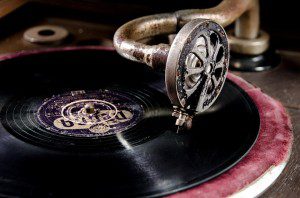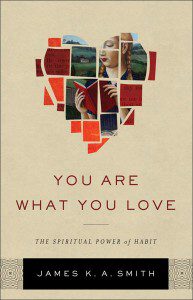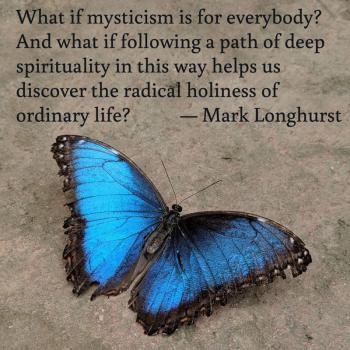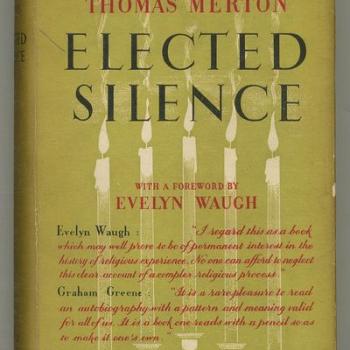
Sometimes I’m a bit slow on the uptake.
Apparently vinyl records have been making a kind of limited comeback for at least the past decade. But I’ve been pretty much oblivious to it, at least until I noticed that used vinyl record shops were opening (not closing) in trendy neighborhoods around Atlanta.
And then one day last year I stumbled across a rack of expensive, audiophile quality vinyl records in my local Barnes & Noble, of all places!
When I told a friend of mine about this, he offered to loan me his old turntable. I took him up on the offer, and soon I was joyfully scouring thrift stores and secondhand bookshops, happily scarfing up lost treasures from the ’50s and ’60s (and beyond) for as little as a dollar per record.
The 33 1/3 vinyl lp was back in my life, even though I had dismissed it unceremoniously after buying my first CD player way back in 1986.
Granted, vinyl is more of a hobby now than a mainstream way to listen to music; after setting up my turntable, I still listen mostly to CDs and MP3s. But I have enjoyed getting back into vinyl records far more than I would have guessed. And part of it is — maybe the largest part of it — has to do with a few insights that I have gleaned from contemplation, that helps me to appreciate vinyl (and vice versa).
So dust off that old copy of Frampton Comes Alive that you haven’t played in thirty years. Give it a spin, and reflect on these lessons that I have learned from the vinyl revival: insights not only for music lovers, but for spiritual seekers (especially contemplatives).
- Just because something is old doesn’t mean it’s dead. I suppose like many music lovers, I found the surface noise that mar older records annoying — so when the pristine sound of digitally recorded music (first CDs, and later MP3s) came along, I enthusiastically embraced the new media. Vinyl, as far as I was concerned, was old, passé, obsolete technology. But vinyl refused to die, and eventually I came to realize that it really does have qualities that digital music lacks. Moral of the story: just because something is old doesn’t mean it has no value. On the contrary: sometimes what is old is more valuable than we realize.
- Music (like all art) needs to be savored, not consumed. With digital music it’s easy to create playlists that go on for hours and hours. But if you have an iTunes library with over 20,000 songs that it would several months (at 24 hours a day) to listen to — yes, that’s my digital library, and I’m sure it’s not the biggest one out there! — at what point does music stop being an artifact of beauty, and become just another collectible item? It’s far too easy for music to become meaningless background noise, when it just drones on and on out of an overly-long playlist. Sure, you can over-do collecting vinyl as well — but you have to be intentional about playing a vinyl album (see #5 below), so even if you have access to a large library, listening to that music requires a level of mindfulness that fosters a sense of savoring the music, rather than just mindlessly letting it play in the background. In other words, vinyl helps preserve music’s integrity as a work of art.
- Beauty shines through imperfection. Your old vinyl records sound scratchy, with plenty of clicks and pops. So what? Sure, CDs or MP3s have a “cleaner” sound, but you could also make the case that vinyl has a warmer, richer, fuller sound. Even the surface noise — unless a record is badly scratched — cannot really distract from the overall beauty of the music, and by choosing to pay attention to the music rather than the imperfections, we train our ears and our minds to focus on what truly matters.
There’s a contemplative corollary here: when you enter into silent prayer, your mind has plenty of “clicks” and “pops” of its own (all those distracting thoughts!). But just as you can enjoy music even when played on a scratchy record, so too the beauty of contemplation shines through even a distracted mind. - Great music deserves great art and design. There’s a more comprehensive aesthetic experience to playing a vinyl record. The album is large enough that the artwork is much more pleasing than what is found on a CD cover (or a graphic on your iPhone). Especially in the heyday of albums, many were beautifully designed, with custom labels, gatefold albums, booklets, sleeves — an album like Jon Anderson’s Olias of Sunhillow or Led Zeppelin’s Physical Graffiti was a masterpiece of design. It’s a reminder that no form of art exists in a vacuum: the music is enhanced by visual art and design, just as silent prayer is enhanced by meaningful liturgical prayer.
- The best aesthetic experience sometimes moves at a slow pace. Vinyl forces you to slow down. With digital music (especially MP3s) you press a button and there’s the music. With vinyl, it’s a slower, fuller process: removing the disc from the album, cleaning the disc, positioning the needle, turning the album over after finishing one side (usually about 20 minutes); enjoying the art and lyrics printed on the album and sleeve as you listen… the overall experience of enjoying vinyl recordings is so much fuller than the antiseptic process of playing digital songs.
 Rituals matter. I’m reading a wonderful book right now called You Are What You Love: The Spiritual Power of Habit. It’s a book about the importance of ritual in our lives, and reflects on how we all have “secular liturgies” (like shopping at the mall or attending a pro football game) that can shape us, for good or ill, just as religious liturgies can form who we are. Vinyl records have their own rituals, which I have detailed above. These are rituals that help us to value and care for the artistic beauty in our lives. It’s a joy to decide it’s time to listen to a favorite album and to go through the steps necessary to enjoy listening to it. It’s a ritual that celebrates not only music, but careful listening. As central as the music is, the “ritual” of listening to it on vinyl is part of the pleasure.
Rituals matter. I’m reading a wonderful book right now called You Are What You Love: The Spiritual Power of Habit. It’s a book about the importance of ritual in our lives, and reflects on how we all have “secular liturgies” (like shopping at the mall or attending a pro football game) that can shape us, for good or ill, just as religious liturgies can form who we are. Vinyl records have their own rituals, which I have detailed above. These are rituals that help us to value and care for the artistic beauty in our lives. It’s a joy to decide it’s time to listen to a favorite album and to go through the steps necessary to enjoy listening to it. It’s a ritual that celebrates not only music, but careful listening. As central as the music is, the “ritual” of listening to it on vinyl is part of the pleasure.- Some of the life’s best treasures are hidden way off the beaten track. Finally: there’s some great music that’s only available on vinyl. You might have to go rummaging through a used record shop (or the used product listings on Amazon) to find them, but if you’re looking for rare gems like Fairport Convention’s Fairport Chronicles, the Phil Keaggy Band’s Emerging, or Honeytree’s Me and My Old Guitar (to list just a few of my favorites), you’re going to have to find them on vinyl. The takeaway: sometimes what’s really valuable is also really hidden. It’s worth seeking out.
This post is already way too long, but let me briefly tie this in with contemplative practice, which is after all the point behind this blog. Contemplative prayer is a type of “music” for the soul. It must happen slowly, and needs to be savored. It’s certainly an imperfect art, as any practitioner can tell you! It’s built on ancient wisdom that is centuries old, and often not readily available to the mainstream spiritual seeker. Silent prayer is enhanced when it is “ritualized” — such as praying in silence alongside, or as part of, a daily liturgical prayer practice. Finally, just as great music deserves great design, silent prayer deserves (and supports) an overall lifestyle dedicated to serenity, community, and compassion. Those virtues are the “designs” that make contemplation meaningful — and vice versa.
Do you have any other ideas about how something as ordinary as enjoying music on vinyl records can shed light on contemplative spirituality? If so, please share your thoughts with me, whether on a comment to this blog or via social media.
Enjoy reading this blog?
Click here to become a patron.
Stay in touch! Connect with Carl McColman on Facebook:














